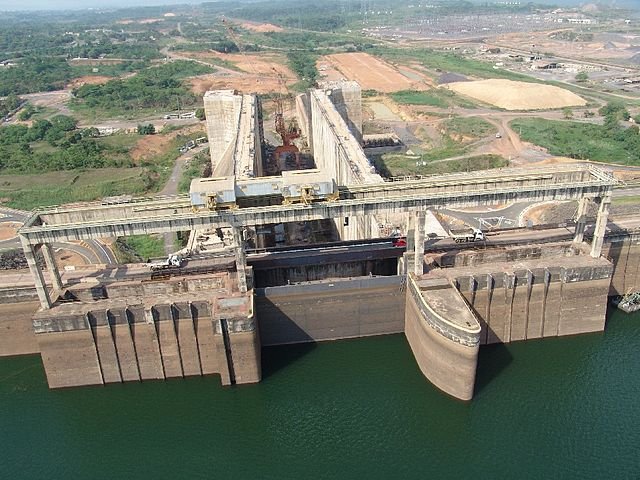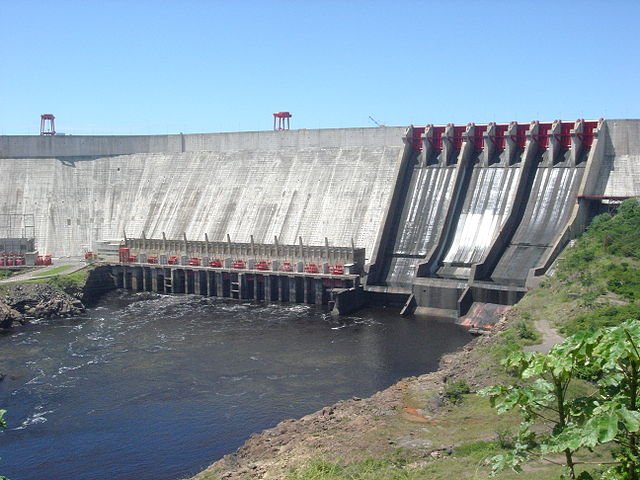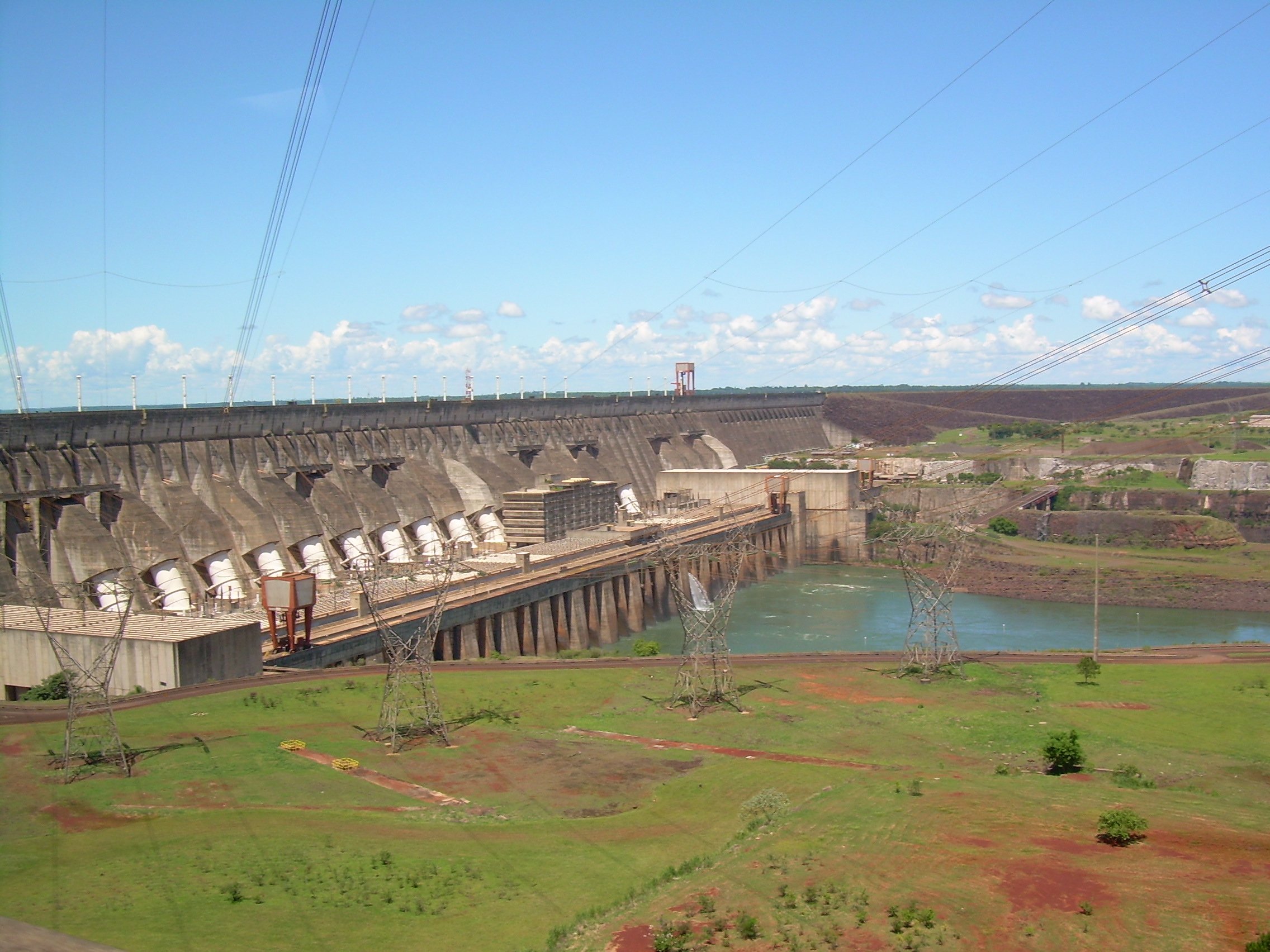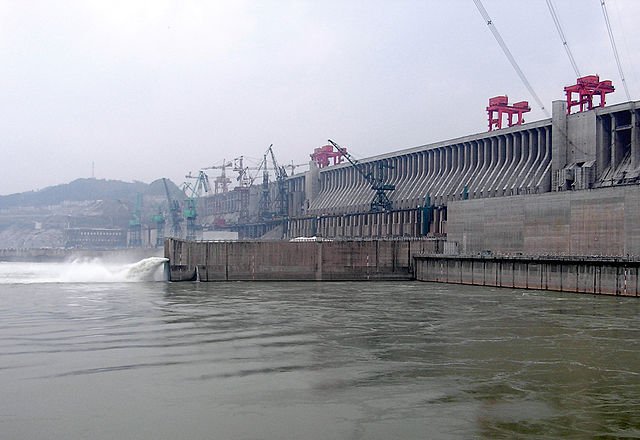Wind, solar, hydroelectric, geothermal, nuclear--almost sounds like Captain Planet.
But not really.
These are the Big Hopes for alternative energy. The solutions meant to rescue the world from carbon. And in some countries they’re doing a really good job--most notably all across Europe, which has significantly cut its fossil fuel emissions over the past 25 years.
But sometimes the pursuit of new energy sources blinds countries to potential consequences. These consequences are generally preferable to fossil fuels, but they should still be evaluated.
Just because an energy source is renewable, does not mean it’s flawless. And going forward, humanity should be just as concerned with reducing aggregate energy consumption as it is with finding alternatives to fossil fuels.
Hydroelectric power is probably the most disruptive alternative energy source available.
Energy-producing dams are essentially in a huge wrestling match with powerful rivers. The rivers want to flow unimpeded, while the dam wants to headlock the water. The ensuing tussle leads to many unintended effects.
The consequences of erecting a big dam in a river can include displacing communities that had relied on the river, killing fish populations that cannot navigate around the new wall, disturbing the composition of the water, soil erosion, wildlife erosion, destruction of nearby environments through flooding, expulsion of animals and even carbon and methane pollution as trees get destroyed.
With that in mind, here are the 5 strongest hydroelectric dams in the world:
5) The Tucuruí Dam in Pará, Brazil .on the Tocantins River has an annual generating capacity of 21.4 Terawatts per hour and was the first dam to be constructed in the Amazon Rainforest beginning back in the 1970s.

The Tucuruí is 7.8 miles in length and 236 feet tall.
The dam mostly provides electricity to industrial players that also benefit from improved navigation of a tamed river.
13 million people have gained electricity from the dam, but the construction displaced 40,000 indigenous people and has killed fish and plant populations and led to deforestation and overall biodiversity loss.
Brazil claims to generate 75% of its energy from hydroelectric power.
4) The Guri Dam in Bolívar State, Venezuela on the Caroni River is 4.6 miles long and 531 feet tall. It supplies 70% of the country’s electricity demands.

Similar to Brazil, Venezuela has made renewable energy the centerpiece of its energy grid. The Guri, in particular, saves the country 300,000 barrels of oil a day.
Although the dam is key to Venezuela’s economy, it has had negative effects.
Flooding from the dam created a lake that destroyed thousands of square miles of forest, devastating existing wildlife.
The history of the Guri also highlights another potential problem with dams: inconsistent water flow. A drought in 2010 led to widespread rolling blackouts.
3) China’s Yangtze River travels for 3,915 miles. On the upper section of the river sits the 3rd largest dam in the world, the Xiluodu Dam, which is 937 feet tall and 2,300 feet wide. It has annual capacity of 57.1 TWh and was constructed to better manage flooding, silt and water release.

The dam offsets about 150m tons of carbon dioxide emissions per year, but 180,000 people were displaced to make way for construction.
The Xiluodu is part of China’s ultra-aggressive hydropower ambitions that are overshooting the country’s water supply and encroaching on the sovereignty of other countries (not surprisingly, downstream countries are not a huge fan of upstream rivers).
China is home to half of the world’s 80,000 dams and has more dams than the US, Brazil and Canada combined.
These dams have already begun to ruin farmland, destroy fish populations and make regions more prone to earthquakes and landslides.
2) Coming in at #2 isThe Itaipu Dam straddling the border of Paraguay and Brazil on the Paraná River.

This $19.6 billion USD (240% overcost) dam stretches 4.9 miles and climbs 643 feet into the air. It has an annual generating capacity of 87.8 TWh, supplying 75% of Paraguay’s energy and 17% of Brazil’s.
50 million tons of earth and rock were moved during construction. The concrete used to build the dam could fill 210 football stadiums and the iron and steel could build 380 Eiffel Towers.
Like the other dams, the Itaipu has caused biodiversity loss, mass erosion and wildlife destruction and displacement of thousands of families.
However, the dam produces as much energy as burning 434,000 barrels of oil per day.
1) Further down the Yangtze River in China lives the most powerful dam in the world: The Three Gorges Dam, which spans 1.45 miles and is 594 feet tall.

The $26 billion (USD) dam produces 98.8 TWh annually, and supplies 1.7% of China’s gargantuan energy demand. Nine provinces and two cities consume energy from the dam.
In the case of dams, size and controversy seem to increase together.
The Three Gorges Dam, completed in 2013, is the poster child of harmful ecological impact for dams.
1.2 million people were displaced by the dam as waters submerged huge swaths of land. Deforestation, land erosion, plummeting fish stocks, biodiversity loss and other impacts have occurred.
While the dam is able to limit harmful flooding for downstream farmers, it has been blamed for exacerbating droughts and leading to damage from too much silt.
I’m all for renewable energy. If it were up to me, all coal plants would be shuddered, inefficient vehicles would be taken off roads, energy companies would be forced to do all they could to optimize every home and building, economies would be restructured to drastically cut energy use, solar panel creation and installation would receive major subsidies, no new drilling licenses would be given to oil and gas companies, existing licenses would be drastically curbed and whatever else needed to be done to halt climate change and promote sustainable development would be done.
But it’s not up to me. Obviously.
And from a distance, I can’t help but notice that under the mantle of renewable energy a lot of variables go unconsidered.
Going forward, countries have to be more careful when they implement alternative sources of energy. For systems as massive as hydroelectric dams, you’d think the calculus of harm versus benefit would be better managed.
If you agree that everyone should have access to safe, sustainable energy, then go to TAKE ACTION NOW to call on the US congress to pass the Electricty Africa Act.
Share your thoughts with me on Facebook or Twitter!